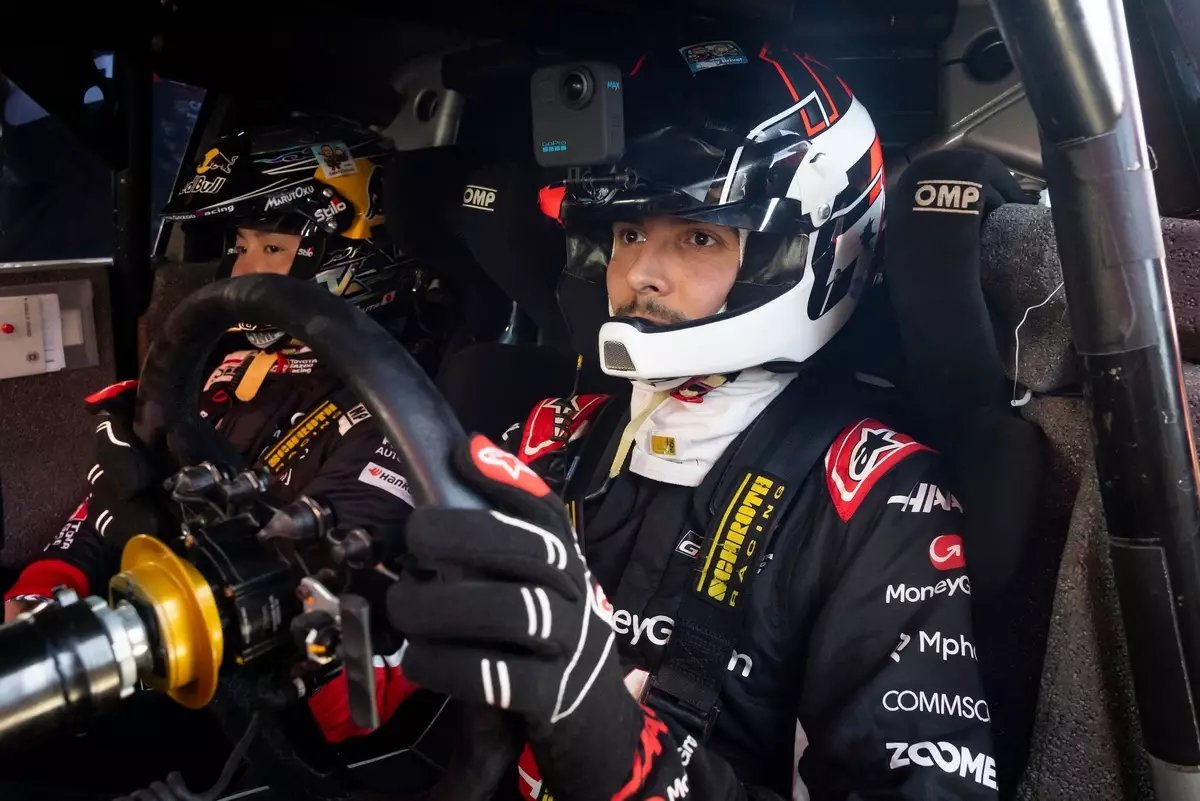In the high-octane universe of motorsport, opportunities that blur the lines between disciplines and dreams are rare and precious. Esteban Ocon’s recent experience at the Goodwood Festival of Speed exemplifies how a genuine passion, combined with strategic partnerships, can create moments that transcend conventional racing narratives. Ocon, a seasoned Formula 1 driver, was granted a once-in-a-lifetime chance to drive a World Rally Championship (WRC) car—an experience that not only fulfilled a childhood dream but also challenged the preconceived notions about driver versatility and potential.
What stands out most is the element of surprise orchestrated by Toyota, which covertly arranged for Ocon to get behind the wheel of the Rally1 GR Yaris. This act of kindness exemplifies how automotive collaborations can unlock hidden passions and expand the horizons of drivers outside their primary disciplines. More importantly, it demonstrates that the automotive world is more interconnected than many might think—a place where cross-pollination of ideas, skills, and dreams leads not only to memorable moments but also to a reevaluation of what drivers can achieve.
Beyond the Surface: The Power of Genuine Enthusiasm
Ocon’s narrative reveals a profound truth: that genuine enthusiasm and curiosity fuel innovation and personal growth. His candid recounting of how he harbored a boyhood dream of owning a WRC car underscores the importance of nurturing passions regardless of current profession. Despite the specialized nature of his F1 career, Ocon’s yearning to experience rallying persisted, ultimately leading to a serendipitous opportunity that seemingly bridges childhood fantasy and professional achievement.
This experience reinforces that passion is a catalyst for exploration. It suggests that when organizations nurture genuine interests within their talents, they foster an environment where growth transcends current roles. Ocon’s encounter with the rally car was not merely about speed; it was about reconnecting with his childhood aspirations, finding joy in new engineering marvels, and embracing novel driving sensations. Such moments are rare and invaluable, reminding us that success is not solely defined by podiums but by personal fulfillment and the courage to pursue one’s dreams.
Engineering Marvels and Driver Versatility
The technical marvel that is the WRC car offers a stark contrast to the precision and complexity of F1 machinery. Ocon’s fascination with how well-designed and intuitive the Rally1 car felt highlights the incredible engineering prowess in rally car development. The effortless steering, the seamless handbrake, and the responsiveness of the throttle exemplify peak craftsmanship—craftsmanship that deserves admiration and further exploration.
Ocon’s remarks about the car’s engineering quality challenge the outdated idea that drivers are strictly specialized. His enthusiasm signals a new perspective: that skills learned in diverse motorsport disciplines can complement and enhance each other. Just as the best athletes in various sports borrow techniques across fields, racing drivers might benefit from cross-training in different disciplines, broadening their skill sets and mental adaptability. This crossover hints at a future where driver versatility becomes a valued attribute, fostering a more holistic approach to driver development.
Breaking Down Stereotypes and Visioning New Horizons
Perhaps the most compelling aspect of Ocon’s rally adventure is its potential to redefine driver stereotypes. Historically, rallying and Formula 1 have been perceived as distinct worlds with little overlap. However, Ocon’s firsthand experience exposes the fallacy of such rigid boundaries. His admiration for the engineering and dynamic capabilities of WRC cars suggests that the talents honed in F1—such as car feel, precision driving, and adaptability—are transferable across disciplines.
This crossover paves the way for a broader cultural shift within motorsport communities. Drivers might increasingly seek secondary skills to enhance their primary discipline, and teams could prioritize multi-talented drivers who appreciate engineering, adaptability, and a diverse skill set. It also opens doors for more crossover events, test drives, and collaborative projects that celebrate the multifaceted nature of racing.
Implications for the Future of Motorsport
Ocon’s extraordinary experience foreshadows a future where limits are fluid, and opportunities for exploration are abundant. As automotive technology evolves—integrating hybrid powertrains, advanced aerodynamics, and innovative control systems—the best drivers of tomorrow will need to be adaptable, curious, and open-minded. Cross-disciplinary experiences, like Ocon’s rally drives, could become standard components of driver training and development programs.
Furthermore, this event underscores the importance of industry collaboration. Toyota’s secretive yet thoughtful initiative reflects how automakers and racing teams can foster talent and rekindle passions by creating moments of genuine excitement. It suggests a paradigm shift: rather than isolating disciplines, the future may belong to those who embrace the interconnectedness of motorsport genres, unlocking new efficiencies, insights, and, above all, inspiring a new generation of racing enthusiasts willing to dream big.
The story of Esteban Ocon’s rally experience is more than a feel-good narrative; it’s a blueprint for how passion, engineering, and collaboration can break down barriers and redefine what it means to be a versatile, fulfilled driver in a rapidly changing motorsport landscape.

